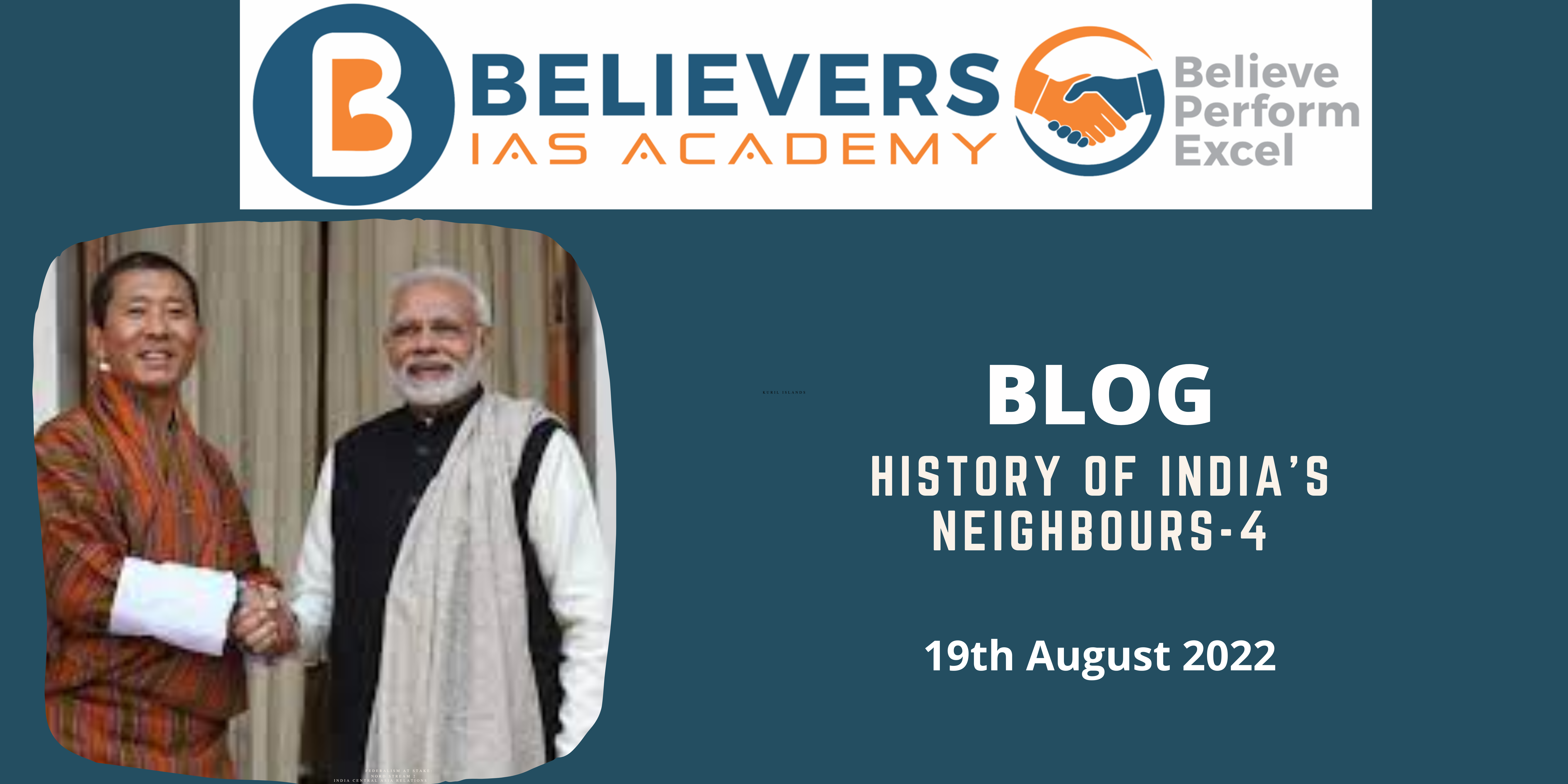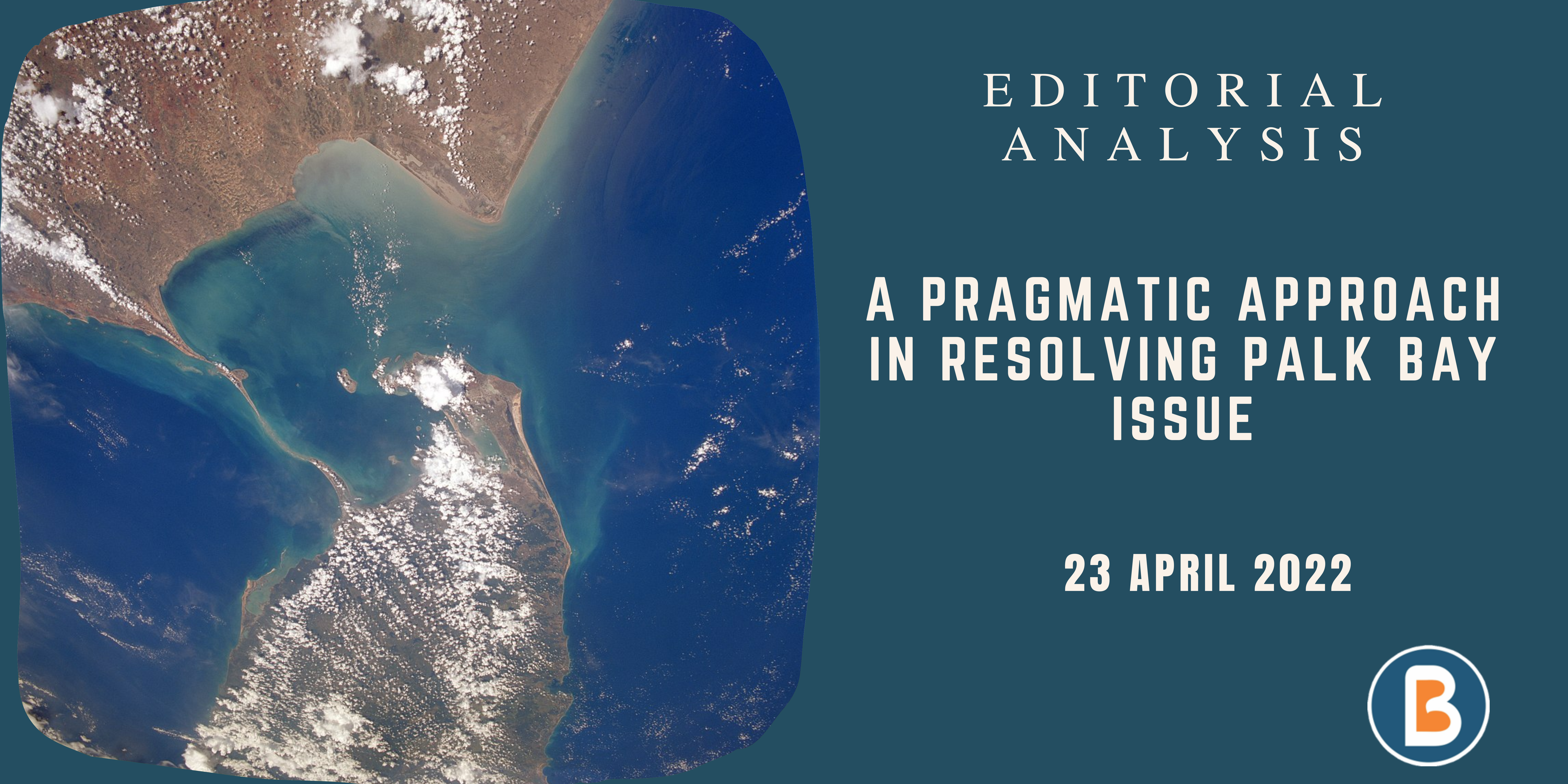History of India’s Neighbours-4
Bhutan
About Bhutan
- Bhutan, officially the Kingdom of Bhutan, is a landlocked country in the Eastern Himalayas, located between China and India. Bhutan is known as “Druk Yul,” or “Land of the Thunder Dragon”. It is a constitutional monarchy with Vajrayana Buddhism as the state religion. Bhutan also follows a modified version of the Tibetan Cho-sid-nyi system, where the secular/temporal ruler coexists with the spiritual authority of the realm.
- This has been reiterated by the 2008 Constitution. Bhutan is also the first country in the world to use Gross National Happiness (GNP) as a measure of development. Bhutan is also the only Carbon Negative country in the world.
From 1947-1972
- Bhutan became a de facto protectorate of the British Empire under the Treaty of Punakha in 1910. When British rule over India ended in 1947, so too did Britain’s association with Bhutan. India succeeded Britain as the de facto protector of the Himalayan kingdom, and Bhutan retained control over its internal government.
- This was given official recognition by the Treaty of Friendship between the Government of India and the Government of Bhutan in 1949 which included a clause that India would assist Bhutan in foreign relations. When the China took over Tibet in 1951, Bhutan closed its frontier with Tibet and sided with India to maintain independence. It also started modernisation measures to improve the nation.
- In 1953 the King of Bhutan established the Tshogdu or Bhutanese Grand National Assembly which was a unicameral legislature of Bhutan. Land reforms were initiated along with the abolition of slavery and serfdom and the separation of the judiciary from the executive branch of government.
- Bhutan also started investing on construction of roads linking the Indian plains with central Bhutan. An all-weather road was completed in 1962 between Thimphu and Phuntsholing, the overland gateway town on the southwest border with India.
- Thimphu was made the capital city of Bhutan in 1961. They also started investing on infrastructure, starting many development projects included establishing such institutions as a national museum in Paro and a national library, national archives, and national stadium, as well as buildings to house the National Assembly, the High Court (Thrimkhang Gongma), and other government entities in Thimphu. Dzongkha was made the official language of Bhutan in 1971.
Era of reforms 1972-2007
- During the 1970s, the government of Bhutan focused on rural households by intensive valley projects, cash crops cultivation, especially potatoes – irrigation, and resettlement. Realising Bhutan was undergoing a major Human resources crisis, their government established the Royal Institute of Health Sciences (RIHS) and the first batch of Health Assistants and Basic Health Workers graduated in 1986.
- In October 1974, the first group of 20 tourists entered the country through Phuntsholing, as there was no air service then. The first international air link in the history of Bhutan happened in 1983 when a Dornier flight took off from Paro to Kolkata.
- Despite these reform measures, there were disturbing undercurrents happening in the country due to cultural and ethnic differences. In the 1980s the government promulgated directives that sought to preserve Bhutan’s cultural identity as well as to formally embrace the citizens of other ethnic groups in a “One Nation, One People” policy.
- To reinforce this movement, the government forced the use of the Driglam Namzha, the Bhutanese national dress and etiquette code. This policy required citizens to wear the attire of the northern Bhutanese in public places under penalty of fines, and reinforced the status of Dzongkha as the national language. They also introduced a citizenship act in 1985 which declared those who could not provide proof of residency prior to 1958 as illegal immigrants.
- This was criticised mainly by the Nepali descendants or Lhotshampas in south Bhutan. They organised a militant movement against these measures. This interethnic conflict kept increasing, prompting a peak in Lhotshampa departures, totaling over 100,000 by 1996. They were settled in Nepali refugee camps run by UNHRC. In 2000, after years of discussion, Bhutan and Nepal reached an agreement about the voluntary return of certain Bhutanese refugees living in Nepalese camps.
New Constitution and Constitutional Monarchy; 2008-present
- On 4 September 2001, King Jigme Singye Wangchuck briefed the Lhengye Zhungtshog (Council of Ministers, or Cabinet), the Chief Justice, and the Chairman of the Royal Advisory Council on the need to draft a formal Constitution for the Kingdom of Bhutan. On November 30, 2001, the King inaugurated the outset of its drafting with a ceremony. By 2005, the Royal Government had circulated copies of the draft among the civil service and local governments in order to receive locals’ feedback.
- Bhutan held its first general election on March 24, 2008 for the National Assembly. Turnout reached nearly 80% by the time the polls closed. The new Constitution was finally enacted on 18 July 2008 by the Royal Government of Bhutan. The Constitution confirms the institution of monarchy. While the Supreme Court of Bhutan is the guardian of the Constitution and the final authority on its interpretation.
- It also includes provisions for involuntary abdication in the event the King violates the Constitution.




